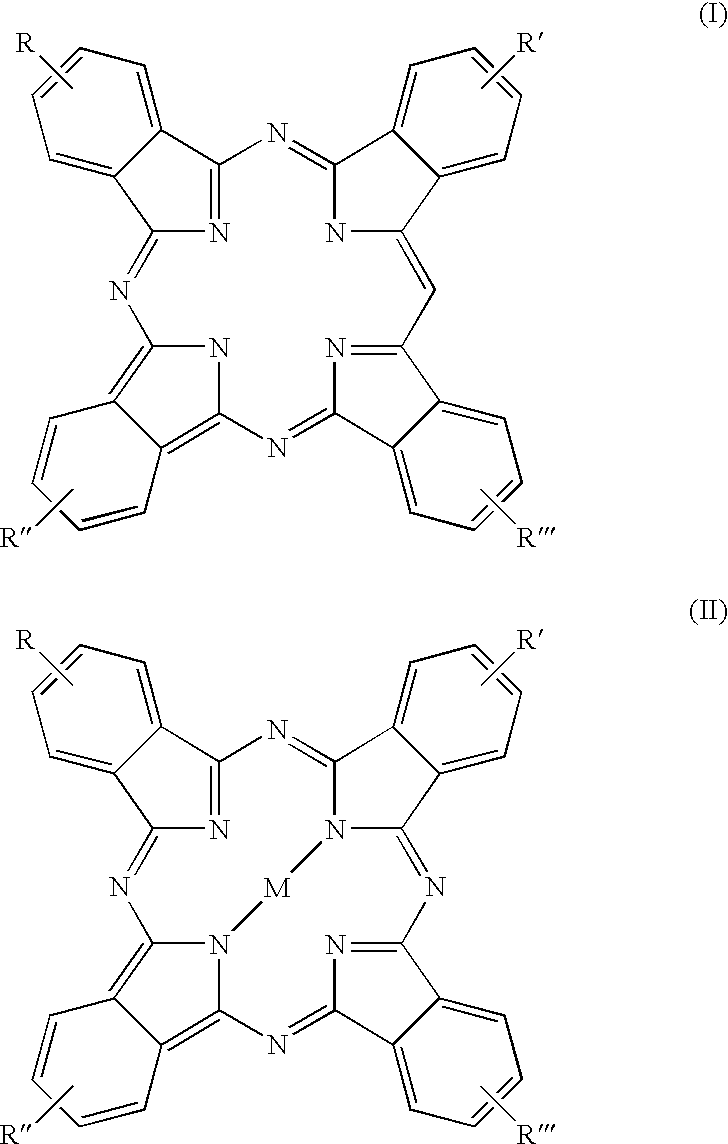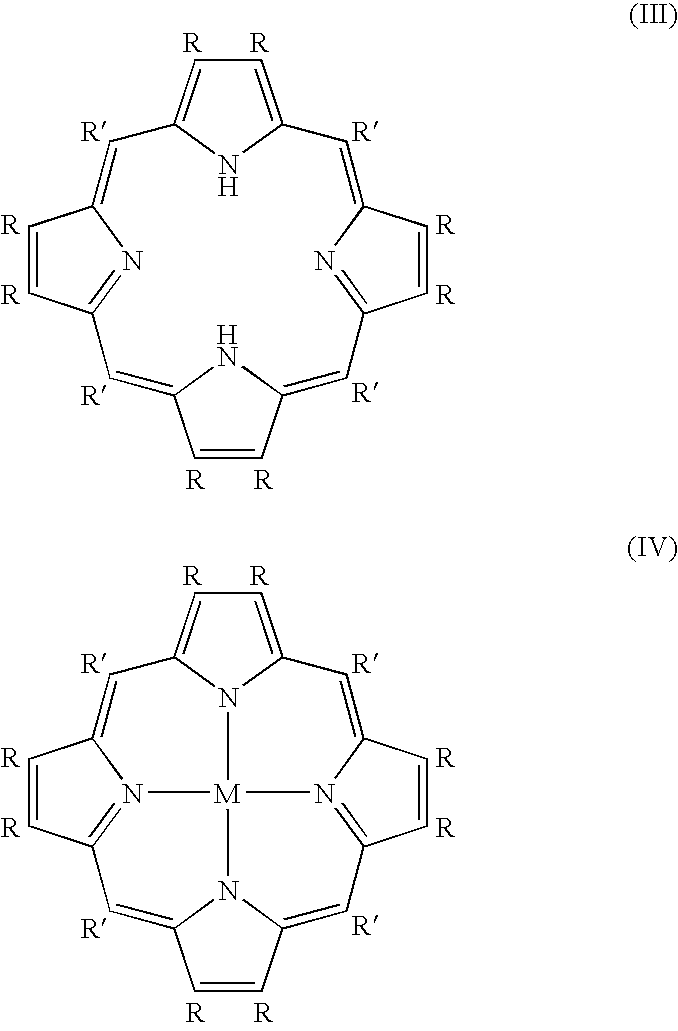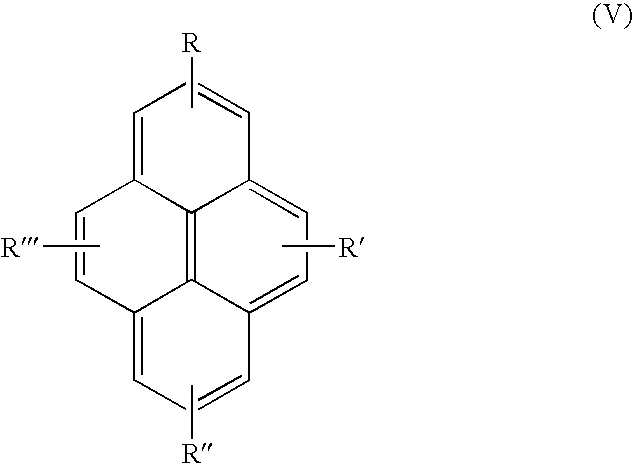Conductive thermoplastic composites and methods of making
a thermoplastic composite and thermoplastic composite technology, applied in the direction of resistor details, conductors, non-metal conductors, etc., can solve the problems of poor elongation and impact strength, reduced and reduced moldability and mechanical properties, so as to increase enhance the electrical conductivity of polymeric composites.
- Summary
- Abstract
- Description
- Claims
- Application Information
AI Technical Summary
Benefits of technology
Problems solved by technology
Method used
Image
Examples
example 2
[0040] The following composites were generated in a lab-scale batch mixer to observe the effect of unsubstituted phthalocyanine with no metal center on the electrical conductivity of composites. The composites contained a high flow polycarbonate with a typical MFI of 20-30 g / 10 min at 300.degree. C. / 1.2 kg and vapor grown carbon fibers from Applied Sciences having an average diameter of 80 nanometers as measured by Transmission Electron Microscopy. The required amount of polycarbonate was melted in the batch mixer and then phthalocyanine and VGCF mixed in appropriate proportion was added slowly to the melt at the rotor speed of 10 revolutions per minute, and at a melt temperature of about 280 .degree. C. The mixture was blended in the mixer for 6 minutes, the composite was taken out, and compression molded into discs. Results are shown in Table 2 below.
2TABLE 2 Phthalocyanine, Volume Resistivity, Compositon MWNTs, wt % wt % kOhm-cm 4 3.5 0 20235 5 3.5 0.5 2337 6 3.75 0 45 7 3.75 0.5...
example 3
[0042] The following composites were generated on a 30 mm lab Scale Buss Kneader using standard polycarbonate / polybutylene terephthalate processing conditions. The effect of copper phthalocyanine on the percolation curve of a conductive carbon black (Columbian Chemicals) in a blend of polycarbonate and polybutylene terephthalate was observed. The percolation threshold is the filler loading required to achieve a desired level of conductivity in the compositions. The amount of carbon black was from 10 wt % to 15 wt % based on the total weight of the composite. The carbon black had a nominal BET Surface Area of 140 m.sup.2 / g. The ratio of polycarbonate to polybutylene terephthalate was 75 / 25 based on resin weight and held constant during the experiments. As shown in FIG. 1, the composites with 0.5 wt % copper phthalocyanine have higher conductivities at lower concentrations of conductive carbon back that the composites without the phthalocyanine derivative.
example 4
[0043] The following composites were generated on a 30 mm lab Scale Buss Kneader using standard polycarbonate / polybutylene terephthalate processing conditions. The effect of copper phthalocyanine on the percolation curve of a conductive carbon black (Degussa) in a blend of polycarbonate and polybutylene terephthalate was observed., The amount of conductive carbon black was from 6 wt % to 10 wt %6 based on the total weight of the composite. The carbon black has a nominal BET Surface Area of 950 m.sup.2 / g (square meters / gram), a much higher structure carbon black than that used in Example 3. The ratio of polycarbonate to polybutylene terephthalate was 75 / 25 based on resin weight and held constant during the experiments. As shown in FIG. 2, the addition of copper phthalocyanine to the composites decreased the volume resistivity at conductive carbon black loadings of 6 wt % and 8 wt %. At 10 wt % carbon black, the phthalocyanine has little effect on the volume resistivity. Thus, the add...
PUM
| Property | Measurement | Unit |
|---|---|---|
| Fraction | aaaaa | aaaaa |
| Fraction | aaaaa | aaaaa |
| Fraction | aaaaa | aaaaa |
Abstract
Description
Claims
Application Information
 Login to View More
Login to View More - R&D
- Intellectual Property
- Life Sciences
- Materials
- Tech Scout
- Unparalleled Data Quality
- Higher Quality Content
- 60% Fewer Hallucinations
Browse by: Latest US Patents, China's latest patents, Technical Efficacy Thesaurus, Application Domain, Technology Topic, Popular Technical Reports.
© 2025 PatSnap. All rights reserved.Legal|Privacy policy|Modern Slavery Act Transparency Statement|Sitemap|About US| Contact US: help@patsnap.com



